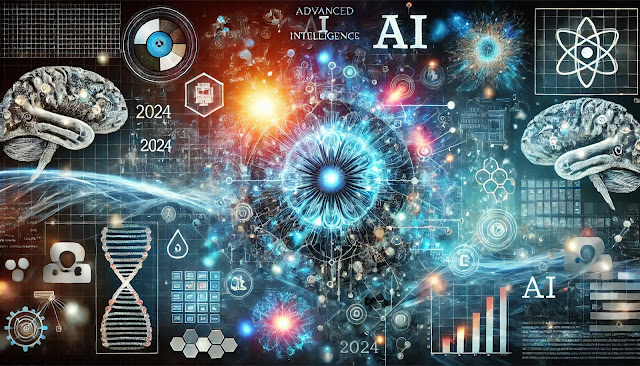Machine Learning and the Internet of Things (IoT): A Perfect Pairing
In the fast-paced world of technology, two of the most exciting developments are Machine Learning (ML) and the Internet of Things (IoT). Individually, they have transformed various industries, but together, they create a powerhouse capable of driving significant innovation and efficiency. Let's dive into the world where sensors meet algorithms, and devices get a dash of intelligence.
What is IoT?
IoT, or the Internet of Things, refers to the network of physical objects—devices, vehicles, appliances, and more—embedded with sensors, software, and other technologies to connect and exchange data with other devices and systems over the internet. These "things" range from ordinary household objects to sophisticated industrial tools.
- Examples of IoT Devices:
- Smart thermostats like Nest
- Wearable health monitors such as Fitbit
- Connected cars with real-time diagnostics
- Industrial machinery with predictive maintenance sensors
What is Machine Learning?
Machine Learning is a subset of artificial intelligence (AI) that enables systems to learn from data, identify patterns, and make decisions with minimal human intervention. By feeding data into algorithms, ML models can improve their performance over time.
- Types of Machine Learning:
- Supervised Learning: The model is trained on a labeled dataset, where the output is known.
- Unsupervised Learning: The model explores data to find hidden patterns without pre-existing labels.
- Reinforcement Learning: The model learns through trial and error, receiving rewards or penalties for actions.
The Symbiosis of ML and IoT
When Machine Learning is applied to IoT, it enhances the capability of IoT devices, making them not just connected, but intelligent. Here’s how they work together:
- Data Collection: IoT devices generate massive amounts of data from their sensors.
- Data Processing: Machine Learning algorithms analyze this data to find patterns and insights.
- Actionable Insights: The insights are used to make decisions, predict outcomes, and optimize processes.
Practical Applications of ML in IoT
1. Smart Homes:
- Predictive Maintenance: ML models predict when home appliances are likely to fail, allowing for timely repairs and replacements.
- Energy Optimization: Smart thermostats learn user preferences and adjust heating/cooling to save energy.
- Security: IoT-enabled cameras use ML for facial recognition and to detect unusual activity.
2. Healthcare:
- Patient Monitoring: Wearable devices track vital signs and use ML to predict health issues before they become critical.
- Personalized Treatment: ML algorithms analyze patient data to recommend personalized treatment plans.
- Operational Efficiency: IoT devices in hospitals track equipment and supplies, ensuring efficient use and replenishment.
3. Industrial IoT (IIoT):
- Predictive Maintenance: Sensors on machinery monitor performance, and ML models predict failures, reducing downtime.
- Quality Control: ML analyzes data from production lines to detect defects and improve product quality.
- Supply Chain Optimization: IoT devices track goods in real-time, and ML optimizes routes and inventory management.
4. Agriculture:
- Crop Monitoring: Sensors in fields collect data on soil conditions, and ML models recommend irrigation and fertilization schedules.
- Pest Control: ML algorithms analyze data from traps and sensors to predict and manage pest outbreaks.
- Yield Prediction: ML predicts crop yields based on historical data and current conditions.
5. Smart Cities:
- Traffic Management: IoT sensors monitor traffic flow, and ML models optimize traffic light timings to reduce congestion.
- Energy Management: ML algorithms predict energy demand and optimize the use of renewable energy sources.
- Waste Management: IoT-enabled bins report fill levels, and ML optimizes waste collection routes.
Challenges and Considerations
Despite the immense potential, integrating ML with IoT comes with its challenges:
- Data Privacy and Security: The vast amount of data generated by IoT devices needs to be protected against breaches and misuse.
- Scalability: Handling and processing data from millions of devices require scalable infrastructure.
- Interoperability: Ensuring different IoT devices and platforms can work together seamlessly is crucial.
- Real-time Processing: Many IoT applications require real-time data processing, which can be challenging with large datasets.
The Future of ML and IoT
The synergy between ML and IoT is set to revolutionize numerous sectors. Here are some future trends to watch:
- Edge Computing: Moving data processing closer to the data source (on the edge) to reduce latency and bandwidth use.
- 5G Connectivity: Faster and more reliable internet connections will enhance IoT device performance and data transmission.
- Advanced Analytics: More sophisticated ML models will provide deeper insights and more accurate predictions.
- Autonomous Systems: IoT devices will become more autonomous, making decisions without human intervention based on ML insights.
Conclusion
Machine Learning and IoT are a match made in tech heaven, each amplifying the strengths of the other. By harnessing the power of data, they are creating smarter homes, healthier lives, efficient industries, and sustainable cities. As we move into an increasingly connected world, the integration of these technologies will continue to drive innovation and improve our daily lives.





Comments